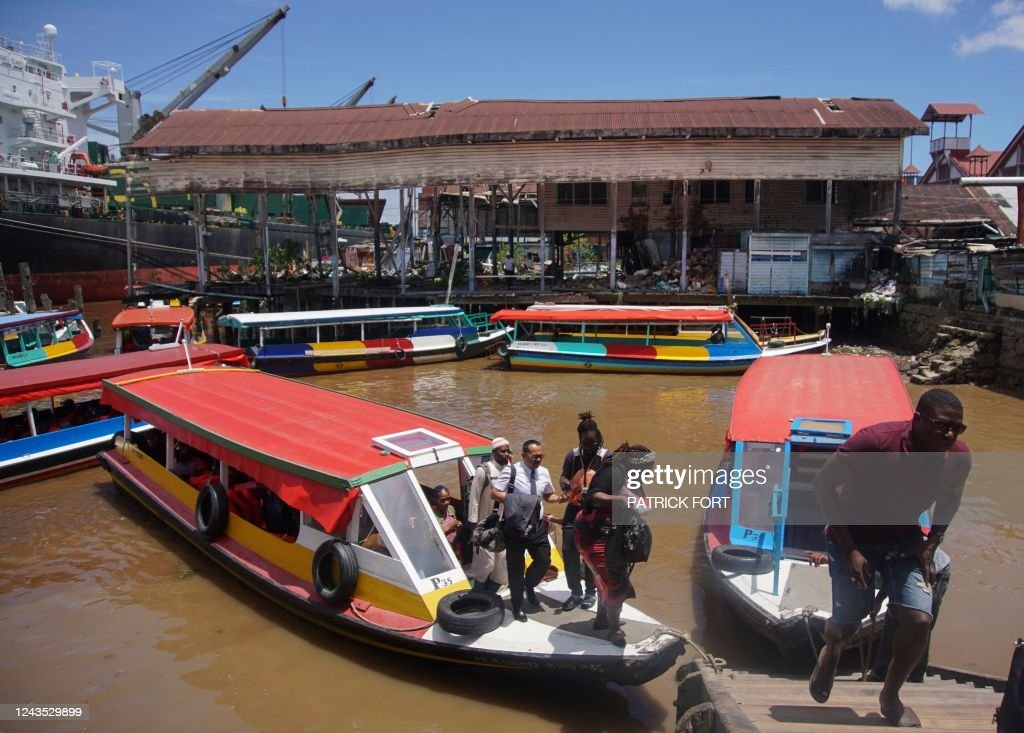By Dr. Lorraine Sobers
News Americas, NEW YORK, NY, Mon. Oct. 3, 2022: What can Guyana learn from Botswana, Ghana, Suriname, Qatar, Trinidad and Tobago, the United Arab Emirates, and Venezuela? There is great interest in this type of analysis- gleaning lessons and best practices from the oil and gas development of other countries.
“We are made wise not by the recollection of our past, but by the responsibility for our future” – George Bernard Shaw
Case studies help us to identify best practices, but they are not intended to be imitated blindly. Instead, the focus ought to be on identifying proven principles that lead to right thinking and right action. Changing conditions, shifting strategies and new paradigms call for discretion and common sense in applying history lessons to today’s challenges.
In today’s column I review several case studies and analyses published in the media. It can be overwhelming to keep track of the wide range of comments made in press so today I bring you the three fundamental lessonsemphasized and re-echoed by several commentators in recent years.
- Sovereign Wealth Funds
“It’s not how much money you make, but how much money you keep, how hard it works for you, and how many generations you keep it for.” – Robert Kiyosaki
Several commentators – Blackman, King, Cheatham and Labrado alongside the British High Commissioner to Guyana, Jane Miller – pointed to petrodollars set aside in Sovereign Wealth Funds (SWF) as a best practice for hydrocarbon producers.
Norway has been held up as exemplary oil producer with its SWF balance of approximately $1.3 trillion. The Norwegian Government Pension Fund Global (GPFG) was established in 1990 “to ensure that both present and future generations can benefit from Norway’s petroleum wealth.”
Trinidad and Tobago established its SWF, known as the Heritage and Stabilization Fund, in 2007. In September 2022 the balance stood at $ $4.78 billion. Guyana’s National Resource Fund was established in 2021 to “manage the natural resource wealth of Guyana for the present and future benefit of the people”. Guyana’s fund balance is approximately $753 million at mid 2022, after withdrawing $200 million in May, will grow rapidly with production revenue. Withdrawals are allowed for “national development priorities” and “ameliorating the effects of national disasters.”
In 2019 when Guyana’s discoveries began rolling in and analysts gained a clearer picture of the country’s future, Simon Flowers, Chairman and Chief Analyst for Wood Mackenzie, writing in Forbes Magazine, highlighted the approach taken by UAE and Kuwait to establish and maintain growth in their SWF to balance the highs and lows of oil prices. An effective SWF is one that is free of political meddling, transparent, underpinned by policies that allow for growth and hampers the proliferation of the resource curse on the economy by limiting transfers to the national budget. The onus is on government to perform a delicate balancing act between present and future needs though they may be severely criticized for taking hard decisions.
- Political Stability
History will judge the actions and statements of government representatives and the opposition that impact and influence the sentiments and, in turn, demands of the general public. Weak political institutions are a fast track to the dreaded resource curse, corruption and inflation.
“We need common sense and political stability and sensible, workable policies. That’s what government is for.” — Bruce Sterling
It is quite simple; politically stable countries flourish, politically unstable countries devolve into chaos and poverty regardless form of government, size of hydrocarbon reserves or the favourability of contracts secured with multinational companies. The World Bank‘s ranking for Guyana’s Political Stability and Absence of Violence/Terrorism places it below the average for Latin America and the Caribbean. The same can be said for Government Effectiveness and Regulatory Quality. It is imperative that there is improvement in these areas which are largely internal issues.
Prof Terrance Blackman singles out the apolitical and professional regulation and oversight of Canada’s oil resources as one of the pillars of its success and a lesson for Guyana. Cheatham and Labrado postulated that “robust, democratic institutions” are better able to avoid the resource curse. They suggested that Venezuela’s weak political institutions, oil profits concentrated in the state and mismanagement of funds were internal contributors to the more than 96% of Venezuelans living in poverty. Venezuela’s demise is held up as a case study of what Guyana should avoid.
- Priorities and Economic Diversity
You have heard it said before, “Don’t put all your eggs in one basket”. However, Andrew Carnegie countered this common saying with his own spin: “Put all your eggs in one basket and then watch that basket.”
Economists and analysts are often in favour of the first and more popular quote to support calls for economic diversity. Blackman believes Botswana offers an excellent example for Guyana to use oil revenue to build other revenue generating sectors. Cheatham and Labrado expanded on the potential downfall of placing singular attention on the energy sector by pointing out that “petrodollars can starve other sectors important for growth while increasing imports”.
However, the ‘other sectors’ cannot be described as eggs in a basket because they are not all the same. Diversification must be strategically implemented. Developmental priorities must be set. As a developing country, I believe Guyana must first ensure there is food and water security. Commentators have not discussed this directly but these are not a tangential issues, these are basic needs.
The UN Water Country Brief for Guyana reports that the country faces several water-related challenges such as low irrigation water supply during dry season and flooding in wet season, contamination of potable water supplies, inadequate drainage infrastructure and the need for more highly qualified personnel charged with the responsibility of water management. Water expenditure accounts for 2% of government spending with the majority, over 90%, channelled to agricultural uses.
Agricultural operations are mostly located on the coastal plain lying below sea level at high tide. There are continual battles against water intrusion from the sea and flooding with heavy rains that requires development of extensive drainage systems and coastal protection infrastructure. The second major challenge is a drying trend predicted for the next two decades which will need further investment in storage reservoirs and irrigation systems.
National developmental priorities, such as transport infrastructure, energy generation and distribution, communication systems and education, are earmarked for development in the short to medium term. Serious consideration should first be given to alternative fiscal mechanisms such as public-private partnerships, loans, grants etc to fund projects.
In short three main lessons Guyana can learn are that the country needs 1) fiscal prudence and discipline to put aside funds for future generations; 2) political stability to establish and maintain growth and, 3) economic diversity that prioritizes its basic survival needs before its other developmental priorities.
EDITOR’S NOTE: Dr. Lorraine Sobers is a Fulbright Scholar currently lecturing at the University of the West Indies, St. Augustine. Dr Sobers has a BS in Chemical Engineering and postgraduate degrees, MS and Ph.D., in Petroleum Engineering from Texas Tech and Imperial College, London respectively. She has 19 years’ experience in the energy sector specializing in Carbon Capture and Storage (CCS). Dr Sobers is the Project Coordinator for CO2 Emission Reduction Mobilisation (CERM) Project and a Fellow of the Caribbean Policy Consortium.










